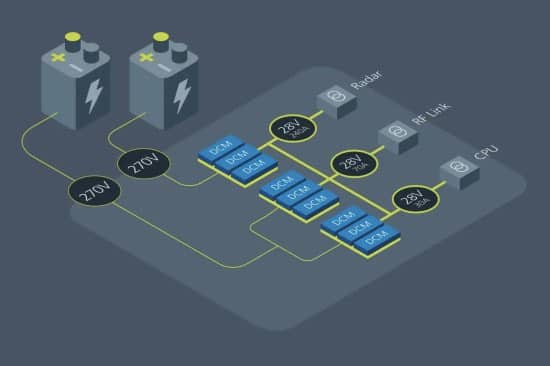This Knowles Precision Devices blog article discusses features and requirements on high-performance MLCC capacitors for aerospace and defense applications.
From military aircraft to electronic warfare defense systems, aerospace and defense applications are placing new demands on their power electronics.
Defense electronics systems must function reliably for their lifetime while operating at higher voltages and wider temperature ranges, and all while becoming smaller, lighter, and consuming less power.
These demands are causing a new trend in circuit design. Electrical engineers are now shifting from using conventional silicon-based (Si) semiconductors to wide-bandgap semiconductors built with silicon carbide (SiC) or gallium nitride (GaN).
This is because electronic components built using these materials can switch faster, are more efficient, and have lower size, weight, and power (SWaP) then traditional Si-based options. As this shift is occurring, the “jobs” that need to be done by capacitors used in the power electronics systems of these aerospace and defense applications are changing as well.
Examining the Demanding Jobs Capacitors Must Perform in Aerospace and Defense Power Systems
The main function of any power system is to create and distribute “usable power” for a variety of devices throughout the application. In a military aircraft for example, this involves taking the “dirty” 270V DC energy provided by a large battery and stepping it down, regulating, and sometimes converting it into “clean” AC energy or lesser values of DC energy to be used in other systems throughout the aircraft. This is done using the following systems as shown in Figure 1:
- Power converters and regulators – Convert high-voltage DC power into low-voltage DC power and control the flow of electrical power throughout the aircraft.
- Inverters – Convert and regulate DC power into AC power for use in an aircraft’s avionics and weapons systems.

For these systems to function reliably, components, such as capacitors, that provide high-reliability, high-Q, EMI suppression, noise reduction, line filtering, energy storage, decoupling of high-frequency noise, and voltage regulation are needed.
For a variety of functions within the power system, these many requirements are best met by multilayer ceramic capacitors (MLCCs). Let’s look more closely at the many jobs these MLCCs must perform in the power system.
Decoupling & Bypass: As decoupling capacitors, MLCCs help maintain stable power supply voltage in the presence of high-frequency noise and other power-related challenges. These capacitors are typically placed close to the power electronics components they are decoupling to minimize the impact of high-frequency noise and other power-related challenges as well as shunting energy from these signals back to the return path.
Energy Storage: MLCCs can be used as resonant capacitors for energy storage that can provide short, but high, bursts of energy when needed. This can be particularly important for high voltage applications.
Filtering: MLCCs can be used to filter out unwanted noise and other high-frequency signals that can interfere with the operation of power electronics components.
Snubbers: Another form of filtering, MLCCs are used as snubber capacitors to suppress harmful voltage transient spikes and noise that comes from switching very fast.
EMI Suppression: Surface mount and panel mount MLCCs or planar arrays are used as filters in connectors to suppress electromagnetic interference (EMI) generated by the power electronics components, which can increase as target switching frequencies increase. A single array can provide multiple capacitance values.
Voltage Regulation: MLCCs can be used to create voltage regulation circuits to maintain a stable power supply voltage.
High-Reliability Components are a Must
Since the consequences of failure of even the smallest component in an aerospace and defense application can be dire, and many of these applications have long lifespans, all the jobs we just discussed must be performed by high-reliability components. High-reliability components are made from the same high-quality materials as standard components, but high-reliability components are subjected to additional screening and testing to ensure long-term reliability.
The most common methods vendors use for screening components for reliability are based on established military specifications (MIL-SPECS). The following are three of the most frequently used MIL-SPECS for screening today:
- MIL-PRF-55681 – A general purpose military high-reliability specification
- MIL-PRF-49467 – Covers requirements for general purpose, ceramic multilayer high voltage capacitors
- MIL-PRF-123 – Provides an increased level of reliability over MIL-PRF-55681 and is commonly used for space applications
When screening MLCCs using MIL-SPECS, components are powered up from 100 percent to 200 percent of the voltage rating while being brought up to an operating temperature of 125 degrees for 100 or more hours.
All this stringent testing is applied to 100 percent of the MLCCs in the lot to ensure each component coming out of the factory is in pristine condition and is likely to sustain high performance over the application’s lifespan. The components that are weeded out by screening are discarded or sent back for further evaluation.